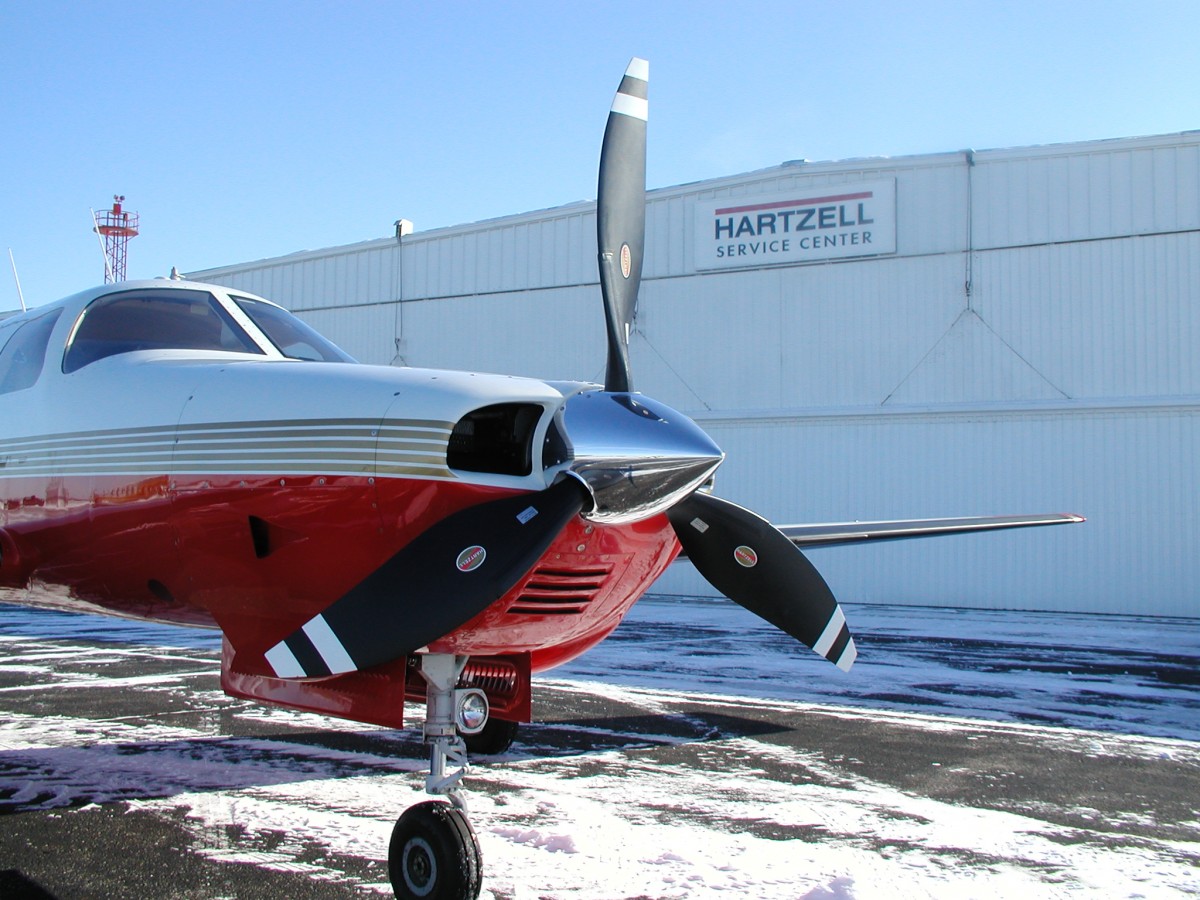
How are composite propeller blades made? The process of making a composite propeller blade today is an exacting and high-tech process.
At Hartzell, we pull carbon fiber socks over a solid foam core, then inject resin with a vacuum pump and cure the blade after it’s put into the mold and pressure is applied. After cure is complete, it is removed from the mold, and refined to precise standards. We use a combination of machine engineering and human expertise to create a high quality composite propeller blade.
What makes composite propellers so popular in aviation is that they are lightweight while being extremely strong, environmentally friendly, and easy to repair. They also have low life-cycle costs. Our composite propellers are full composite, not composite over a wood core. This makes them incredibly durable; they can endure multiple overhauls and can easily be returned to factory specifications each time. In fact, the composite blades are certified for unlimited life. The structure of the composite propeller consists of carbon fiber laminates integrated into a co-molded stainless steel shank. The leading edge is protected with a co-molded electroformed nickel-cobalt erosion shield for greater endurance.
Composite materials make it possible to create thin, efficient airfoils that can still bear the structural load required for optimum aircraft operations. Composite propellers deliver performance improvements at every phase of flight. At Hartzell, we produce thousands of composite propeller blades in any given year.
Check out this behind-the-scenes video of how we manufacture composite propeller blades at our headquarters in Piqua, Ohio: